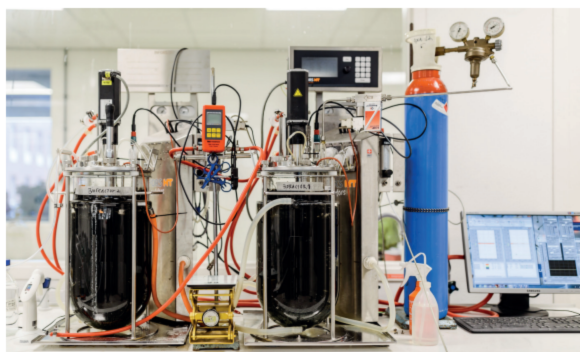
Flow meter used for biogas setup
Adding hydrogen
Gert continues: ‘Eventually, for the lab-scale reactor, we came up with a clever solution of putting a silicon tube in the reactor, and then using a mass flow controller to add hydrogen. The hose was filled with hydrogen that diffused through the wall of the hose, adding very small bubbles that were barely visible – but they were effective. By also stirring the reactor, the micro-organisms could reach the available hydrogen. This went very well on a small scale – but scaling up would require kilometres of hose. Time for the next step: the trickle-bed reactor.’
‘In a trickle-bed reactor, the micro-organisms are immobilised: they are trapped on a porous support with a very large surface area, along which liquid or gaseous components are transported. The micro-organisms we use consist of many different species, and depending on the hydrogen to carbon dioxide ratio, we only facilitate those that can make CH4 from CO2 and H2. Theoretically, you would expect four molecules of hydrogen to one molecule of carbon dioxide to make methane, but in practice you need a little less hydrogen, because carbon dioxide is also used to grow the micro-organisms. So, the ratio is highly important.’